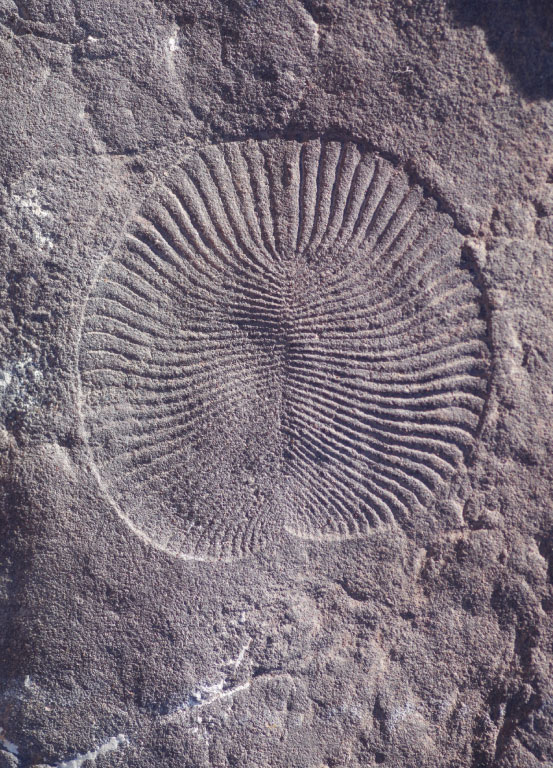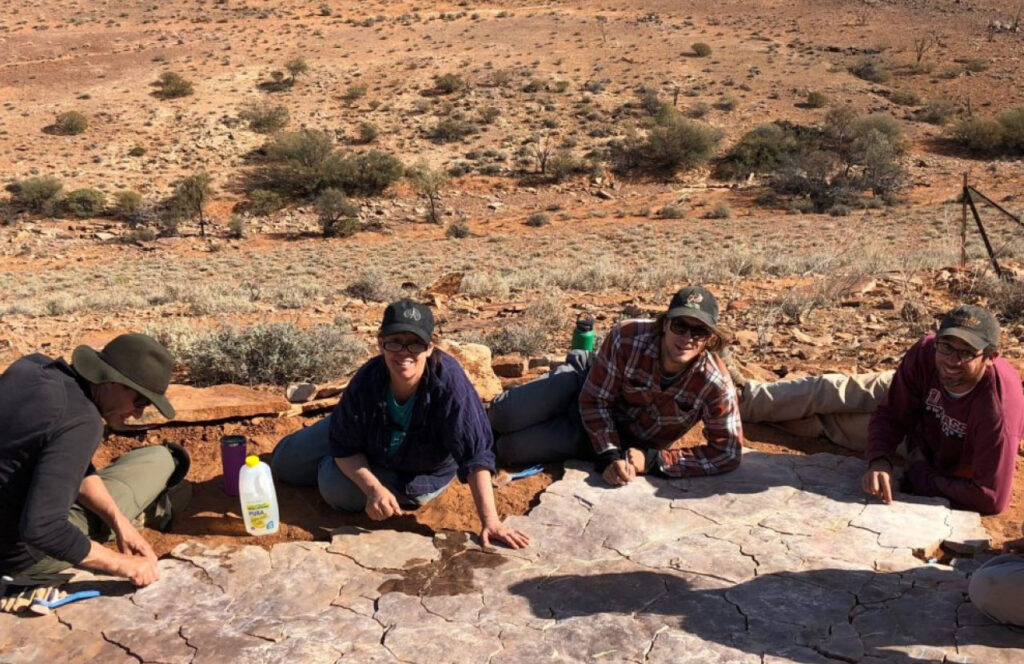What is the Ediacara Biota?
The term ‘Ediacara Biota’ refers to a group of macroscopic (big enough to be seen without a microscope) organisms. They lived during the Ediacaran geological Period between approximately 580 and 538 million years ago. Animals of the Ediacaran Period were ‘soft bodied’ meaning they did not have an internal or exoskeleton. Such organisms are much harder to fossilise which means information about them is rare.
The discoveries at the Nilpena Ediacara National Park are hugely significant because they help to reveal the beginning of animal life.
The fossils of the Ediacaran Period have been called ‘the answer to Darwin’s dilemma’ as prior to their discovery, it was thought the many animals found in the later Cambrian period exploded out of nowhere, defying the theory of evolution. It can now be shown that the Ediacaran Period was a time when many different animals were forming, living, and dying out, some eventually evolving into the animals of today.

The Nilpena Ediacara National Park
Due to its incredible beauty, uniqueness and scientific importance, the Nilpena area was proclaimed a National Park in June 2021, and opened to the public in April 2023, however, its story began much earlier.
In 1946 Reg Sprigg, a South Australian geologist, discovered a series of fossils in the Flinders Ranges area that we now understand to belong to the Ediacaran Period.
Later, in the 1980s, Ross Fargher, leaseholder of Nilpena Pastoral Station, found Ediacaran fossils on his recently-acquired property when a family friend noticed ripple rock acting as the flooring of his woolshed.
Since then, the area has been a place of incredible scientific discovery where palaeontologists have unearthed fossils unlike any others on the planet.
In 2016, Nilpena’s most superbly preserved bed, now known as Alice’s Restaurant Bed, was unearthed by palaeontologist Dr Mary Droser and her team from the University of California Riverside. The bed contains many rare species, with evidence showing that the seafloor was once a habitat supporting a complex ecosystem. Over 40 sandstone beds have been excavated on the hills of the National Park since the palaeontology work began.
Visitors to the National Park get to see and touch the fossils themselves, experience up close the palaeontology that led to their classification, and understand this little known period of life on Earth.
The Palaeontology

In the heart of the Flinders Ranges, Nilpena Ediacara National Park is home to one of the world’s most extraordinary windows into early life on Earth.
What sets Nilpena apart from other fossil sites is the remarkable state of preservation of its Ediacaran fossils and the rare ease with which they can be accessed and studied.
Leading the groundbreaking palaeontological work at Nilpena is Dr Mary Droser, a Distinguished Professor at the University of California, Riverside. Mary has worked alongside Dr Jim Gehling, and now Associate Professor Diego Garcia-Bellido, both palaeontologists at the South Australian Museum.
For nearly 25 years, Dr Droser has been journeying to South Australia with her team to carefully excavate and document the fossil beds, revealing a lost world preserved in stone. In the early years of her work, Dr Droser brought her children and mother along to the remote site. Her mother, Dorothy, played a vital role in supporting the young family. So vital, in fact, that Dr. Droser named one of the early Ediacaran organisms after her: Funisia dorothea.
To date, Dr Droser and her team, alongside the South Australian Museum team, have uncovered nearly 40 fossil-bearing beds at Nilpena. Their research has been supported by two decades of NASA funding, part of a broader mission to explore how indications of early life on Earth might unlock the secrets of life on other planets.
Flinders Ranges Ediacara Foundation
The Flinders Ranges Ediacara Foundation was established in 2018 with a charter to protect the Ediacaran fossils found at Nilpena in South Australia’s Flinders Ranges.
The Ediacaran fossils that can be found in the Flinders Ranges are utterly unique and are of immense scientific value to the world. It is The Foundation’s purpose to protect the region for future generations and support the continued investigation of the earliest remains of moving animal life on the Earth. It achieves its purpose through in situ conservation, and supporting education and tourism, making the fossils and their significance accessible for all.

